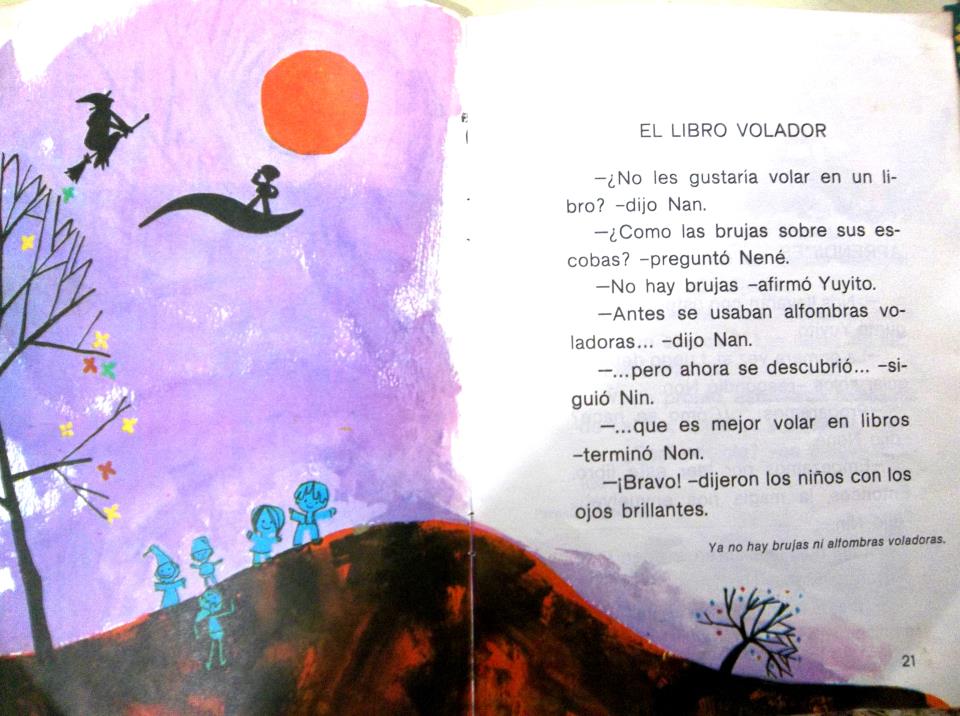Photo courtesy of Carlos Scolari
What makes a semiotician tick? SEMIOVOX’s Josh Glenn has invited his fellow practitioners in the field of commercial semiotics, from around the world, to answer a few revealing questions.
Barcelona…
SEMIOVOX
When you were a child/teen, how did your future fascination with symbols, cultural patterns, interpreting “texts,” and getting beneath the surface of daily life manifest itself?
CARLOS SCOLARI
I remember with great pleasure and excitement my first-grade reading book. El Libro volador (The Flying Book) told the story of a boy and a girl who discovered a magical book that transported them to the world of fiction. The book was a true “semiotic machine” that materialized a narrative world. Many subsequent digital and media experiences that I have lived and researched in the last 30 years, from the video game Myst to the television series Lost, have referred me back to that book.
SEMIOVOX
Describe your first encounter(s) with the theory and practice of semiotics.
CARLOS SCOLARI
When I was at university in Argentina in the mid-1980s, semiotics was seen as something old — a discipline stuck in the ’60s. The “new” thing was cultural studies, post-structuralism, discourse analysis. Fortunately, in the following decade I moved to Italy and I (re)discovered semiotics.
SEMIOVOX
How did you find your own way to doing semiotics?
CARLOS SCOLARI
In the mid-’90s, when I was working as an interface designer in Italy and learning how to be a better “interaction designer,” I discovered that semiotics was a tool crucially useful for understanding and improving those interactions. In 1998, when I was beginning a PhD program and had to select the topic of my thesis, I felt that I had no choice but to begin researching “the semiotics of digital interfaces and interactions.”
SEMIOVOX
What are the most important attributes of a good semiotician?
CARLOS SCOLARI
Curiosity, curiosity, curiosity. Also a good knowledge of basic analytical and theoretical categories.
SEMIOVOX
What three books about semiotics have you found the most useful and enlightening in your own work?
CARLOS SCOLARI
If I had to choose three texts, I would mention the following:
- Umberto Eco’s Lector in Fabula (translated into English as The Role of the Reader). Here Eco charmingly presents his interpretative theory, the same one that he would turn into literature the following year with The Name of the Rose.
- La Semiosis Social 2 by [the Argentine sociologist, anthropologist, and semiotician] Eliseo Verón. Verón’s last book is an almost encyclopedic text where he enters into dialogue with a wide spectrum of semiotic, sociological, and anthropological traditions in order to propose an evolutionary theory of mediatizations.
- Culture and Explosion. Juri Lotman’s final book is a key reference for anyone trying to understand contemporary cultural and media transformations.
Eco’s book is a great tool for understanding microsemiotic processes, while Verón’s presents a powerful framework for understanding long-time transformations. Lotman’s book, meanwhile, presents fundamental concepts and ideas that allow us to grasp macrosemiotic processes.
SEMIOVOX
When someone asks you to describe what you do, what is your “elevator pitch”? How do you persuade a skeptical client to take a chance on using this tool?
CARLOS SCOLARI
Usually, I don’t mention semiotics in a first exchange. For one thing, my research relies not only upon semiotics but other perspectives — from media studies to evolutionary theory and media ecology.
However, whenever I do have to briefly explain and justify the use of semiotics, I say: “If you want to know why people understand what they understand, there is no alternative but to work with semiotics.”
SEMIOVOX
What specific sorts of semiotics-driven projects do you find to be the most enjoyable and rewarding?
CARLOS SCOLARI
Semiotics is a fundamental component of my epistemological “backpack” along with other theories and disciplines. Semiotics helps me, for example, to design learning experiences, evaluate them or — in the case of theoretical production — analyze scientific discourses and map authors and approaches, always working with their differences and oppositions. I also find semiotics very useful when it comes to ordering concepts and organizing analytical categories.
SEMIOVOX
What frustrates you about how semiotics is practiced and/or perceived, right now?
CARLOS SCOLARI
Sometimes I perceive a lack of courage when it comes to thinking about new concepts and analytical models. In many places (especially in universities) semiotics is still anchored to analytical models that are crying out to be updated.
SEMIOVOX
Peirce or Saussure?
CARLOS SCOLARI
When I work with textual material, I start with Saussure. When I work with phenomena that go beyond linguistics, I obviously choose Peirce. If I had to quantify how useful the two theorists are vis-à-vis one another, I would say that this match ended Peirce 3 — Saussure 2.
SEMIOVOX
What advice would you give to a young person interested in this sort of work?
CARLOS SCOLARI
Whether you work with big data, ethnography, surveys or focus groups; and whether you’re in the world of advertising, marketing, brands, biology, or religion — semiotics is always useful, like a Swiss Army Knife.

MAKING SENSE series: MARTHA ARANGO (Sweden) | MACIEJ BIEDZIŃSKI (Poland) | BECKS COLLINS (England) | WHITNEY DUNLAP-FOWLER (USA) | IVÁN ISLAS (Mexico) | WILLIAM LIU (China) | SÓNIA MARQUES (Portugal) | CHIRAG MEDIRATTA (India / Canada) | SERDAR PAKTIN (Turkey / England) | MARIA PAPANTHYMOU (Greece / Russia) | XIMENA TOBI (Argentina) | & many more.
Also see these series: COVID CODES | SEMIO OBJECTS | MAKING SENSE | COLOR CODEX


